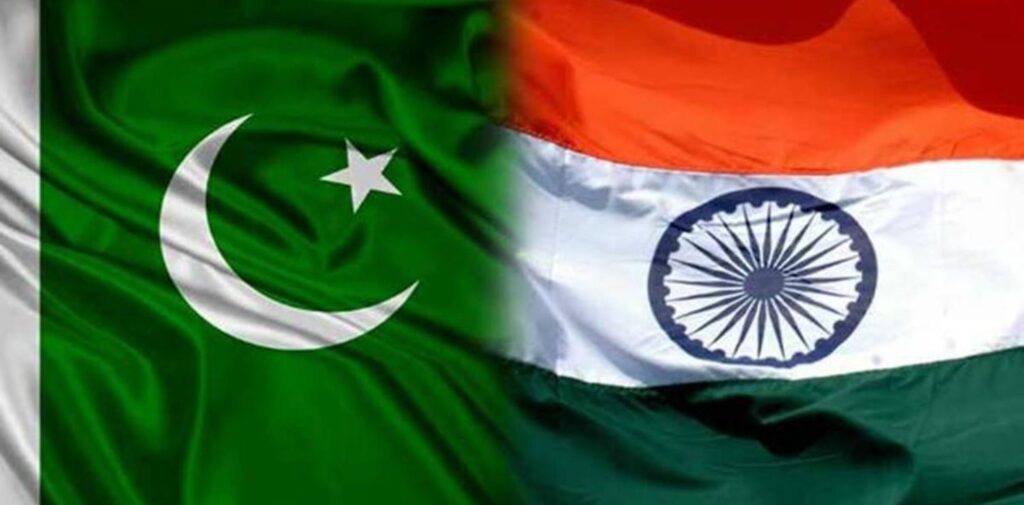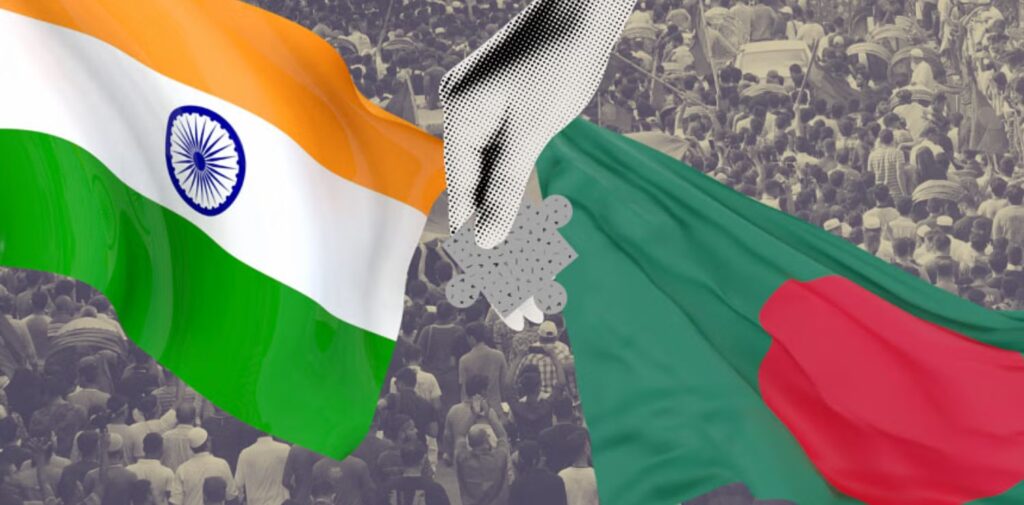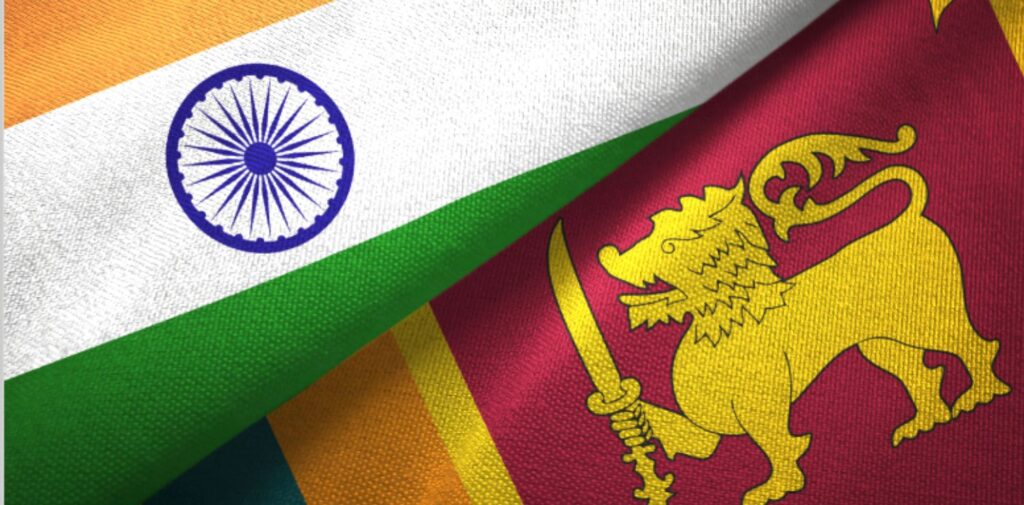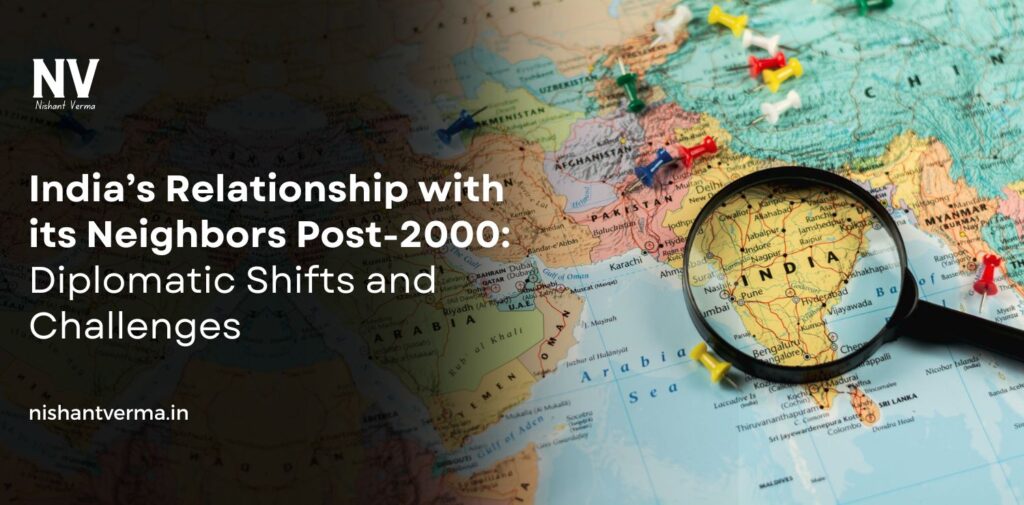India, the world’s largest democracy, has always had a complex and multifaceted relationship with its neighboring countries. These relationships have shaped its foreign policy, economic ties, security concerns, and regional influence. Since 2000, India has seen significant diplomatic shifts and challenges in its relations with its neighbors. The 21st century has brought new opportunities for collaboration, as well as increased tensions. This article explores India relationship with its neighbors in the post-2000 era, highlighting both the diplomatic shifts and the challenges it has faced.
Changing Dynamics in South Asia
South Asia is one of the most politically sensitive regions in the world, and India, being the largest country both in terms of population and economy, plays a pivotal role. Historically, India has been the dominant power in the region, but this has not always been smooth sailing. The post-2000 period has seen both positive developments and difficult times in India’s relations with its neighbors, each having its unique challenges.
India’s neighbors include Pakistan, China, Bangladesh, Sri Lanka, Nepal, Bhutan, and the Maldives. The relationship between India and each of these countries has undergone significant changes over the years, driven by geopolitical shifts, economic interests, security concerns, and regional cooperation.
India and Pakistan: A Relationship Marked by Tensions and Attempts at Dialogue
The relationship between India and Pakistan has been one of the most turbulent in the post-2000 era. Historically rooted in the partition of 1947, the two countries have fought wars and have seen numerous conflicts, especially over the Kashmir issue. In the early 2000s, there were hopes for a thaw in relations, especially after the 2004 bilateral peace process. However, these efforts were disrupted by recurring incidents of terrorism and military standoffs.
One of the most defining moments was the 2008 Mumbai attacks, in which Pakistan-based militants targeted India’s financial capital, leading to a sharp deterioration in relations. Following this, India took a firmer stance on Pakistan, advocating for more stringent counterterrorism measures. Diplomatic attempts, such as the 2015 India-Pakistan talks, often ended in failure due to continued distrust and the volatile security situation in Kashmir.
In recent years, tensions have escalated, particularly after India’s revocation of Article 370 in August 2019, which granted special status to Jammu and Kashmir. Pakistan strongly opposed this move, and relations between the two countries deteriorated even further. Despite these challenges, there remains an ongoing international push for dialogue, though prospects for lasting peace seem uncertain.

India and China: Economic Cooperation Amid Border Tensions
India’s relationship with China has been a mix of competition and cooperation. In the early 2000s, both countries saw growing economic ties, with China emerging as India’s largest trading partner. Trade between the two countries grew rapidly, and India increasingly looked towards China for investment and economic cooperation. However, this economic partnership has been frequently overshadowed by the ongoing border dispute, particularly in the regions of Arunachal Pradesh and Aksai Chin.
The situation worsened in 2017 with the Doklam standoff, where Chinese and Indian troops faced off over a disputed area between Bhutan and China. This highlighted the deep-rooted security concerns India has regarding China’s growing influence in the region. Despite this, economic cooperation has continued, with both countries recognizing the need for engagement, particularly in trade and infrastructure development. The Belt and Road Initiative (BRI) launched by China also garnered attention in India, as it presented both opportunities and challenges.
The 2020 Galwan Valley clash, where Indian and Chinese soldiers clashed along the border, has significantly strained relations. The clash led to casualties on both sides and has raised concerns over the future of India-China relations. Diplomatic and military dialogues have been held to de-escalate tensions, but the long-term implications remain uncertain. India’s efforts to balance economic cooperation with strategic defense concerns will shape its relationship with China in the coming years.
India and Bangladesh: Strengthening Ties Through Shared Interests
In contrast to the tense relationships with some of its neighbors, India’s relationship with Bangladesh has generally been a success story in the post-2000 period. The two countries share a deep cultural, historical, and linguistic bond, and have cooperated extensively on issues like trade, water-sharing, and security. The signing of the 2015 Land Boundary Agreement was a significant milestone, resolving decades-old border disputes and improving bilateral relations.
Bangladesh is one of India’s most important trading partners in the region, and economic cooperation has flourished, especially in the fields of energy, transportation, and connectivity. India has also played a significant role in supporting Bangladesh’s development goals, particularly through aid and investment.
However, challenges remain, particularly regarding the sharing of river water, such as the Teesta River dispute, which has yet to be resolved. Furthermore, issues related to migration and cross-border security, especially in the context of the Northeast Indian states, sometimes strain relations. Despite these challenges, India and Bangladesh continue to build stronger ties, emphasizing cooperation rather than confrontation.

India and Nepal: A Relationship in Flux
India and Nepal share deep historical, cultural, and geographical ties, with a long history of friendly relations. However, the relationship has faced ups and downs, especially in the post-2000 period. Nepal’s increasing inclination toward China has caused concern in India, particularly after Nepal signed a framework agreement with China to participate in the Belt and Road Initiative.
The most recent strain in relations occurred in 2019-2020 when Nepal objected to the Indian government’s decision to issue a new political map that included disputed territories, such as Kalapani and Lipulekh. Nepal responded by releasing its own map, claiming the disputed areas as part of its territory. This created a diplomatic rift between the two nations, leading to tensions that were exacerbated by domestic political factors in Nepal.
Despite these challenges, both countries continue to maintain strong people-to-people ties and have worked together on regional issues like trade, tourism, and security. The relationship remains important for India, given Nepal’s strategic location between India and China, and efforts to restore dialogue and cooperation are ongoing.
India and Sri Lanka: Navigating Geopolitical Tensions
India’s relationship with Sri Lanka is shaped by historical ties, economic cooperation, and strategic considerations. The two countries have cooperated in areas like trade, security, and maritime affairs. However, the relationship has faced challenges, particularly due to Sri Lanka’s close ties with China. Sri Lanka’s participation in China’s Belt and Road Initiative, particularly the Hambantota Port project, has raised concerns in India about Chinese influence in the Indian Ocean region.
India has been an important partner in Sri Lanka’s post-civil war reconstruction and has assisted with economic aid, infrastructure projects, and support for reconciliation efforts. However, tensions arose over the treatment of Tamil minorities in Sri Lanka, particularly during the civil war and its aftermath. India’s support for the Tamil community in Sri Lanka has sometimes created friction with the Sri Lankan government.
Despite these challenges, India continues to maintain strong ties with Sri Lanka, focusing on cooperation in regional security, trade, and maritime matters. India’s role as a regional power ensures that its relationship with Sri Lanka will continue to evolve, balancing strategic interests and humanitarian concerns.

Conclusion: India Relationship with its Neighbors
India relationship with its neighbors post-2000 has been a dynamic and evolving narrative, marked by both opportunities and challenges. From forging strong economic ties with Bangladesh to navigating complex border disputes with Pakistan and China, India’s foreign policy has had to adapt to the changing geopolitical landscape. Each of India’s neighbors presents unique challenges, but also opportunities for collaboration.
As the world’s largest democracy and a growing economic power, India’s role in South Asia remains pivotal. While the challenges remain significant, especially with countries like Pakistan and China, India’s efforts to maintain peaceful, productive relationships with its neighbors continue. The coming years will test India’s diplomatic acumen as it works to balance its regional aspirations with the evolving global power dynamics. In the end, India’s future in South Asia will depend on its ability to navigate these complex relationships while fostering peace, stability, and prosperity in the region.




